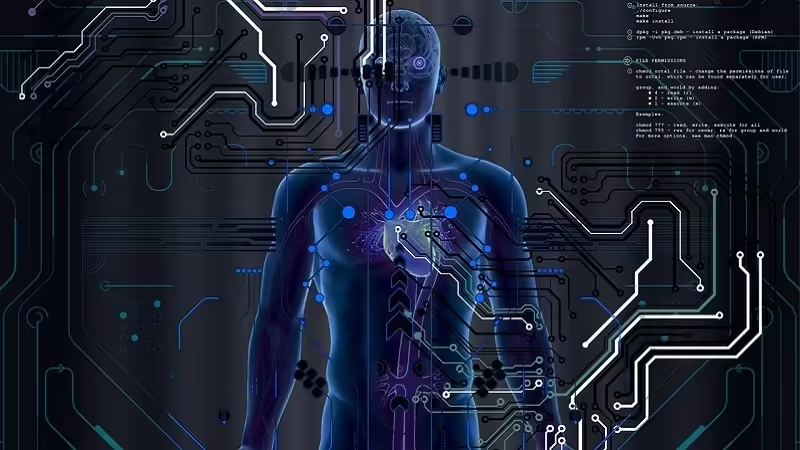
In the fascinating world of technology and logistics, the barcode stands as a key element that has transformed how we interact with products on a daily basis. This small yet powerful symbol, comprised of parallel lines and digits, has unleashed what we now know as the Scanning Revolution, forever altering the way products are managed and tracked worldwide.
Historical Context: From Morse to Barcode
Before delving into the scanning revolution, it is essential to understand the need for a unique identification system for products. Although in the 19th century, Samuel Morse introduced Morse code for message transmission via telegraphy, it wasn’t until the mid-20th century that an efficient solution for product identification in the supply chain was sought.
In 1949, Dr. Norman Joseph Woodland, along with his partner Bernard Silver, conceived the idea of a code that could store information efficiently and be easily scannable. This concept evolved into the barcode, patented by them in 1952. However, it wasn’t until the 1970s that the necessary technology for widespread implementation became readily accessible.
The Birth of the Barcode: Innovation in Product Identification
The barcode is more than a simple set of lines and digits. It is an efficient and precise system for uniquely identifying products. The innovation lies in its ability to store crucial information, such as the country of origin, manufacturer, and product type, all in a limited space and easily readable by machines.
The scanning process revolutionized the speed and accuracy in inventory management and retail sales. The implementation of the barcode enabled tracking every product from its manufacturing to its final destination, optimizing the supply chain and minimizing human errors.
Significance of Innovation in Product Scanning
The Scanning Revolution is not only about the barcode itself but also about the continuous innovation in scanning technologies. From early laser scanners to state-of-the-art computer vision systems, the constant quest to improve speed, accuracy, and versatility in scanning has been pivotal.
The implementation of advanced scanning systems has led to significant improvements in operational efficiency, cost reduction, and a smoother shopping experience for consumers. The adoption of technologies like RFID (Radio-Frequency Identification) and QR codes has taken this revolution to new levels, allowing for more data and functionalities.
Background and Development of the Barcode
The origins of the identification code concept trace back to the need for more efficient and accurate management in the supply chain. Before the barcode, identification methods were manual and prone to errors. The inspiration for a more automated solution emerged in the 1940s when the world was experiencing growing complexity in the production and distribution of goods.
Origins and Evolution of the Identification Code Concept
In 1949, Norman Joseph Woodland, a graduate student, and his partner Bernard Silver proposed the idea of an automatic product identification system. The seed of innovation was planted when Woodland contemplated lines drawn in the sand during a beach visit. This experience led to the conception of a code that could be automatically read and decoded by a machine.
Initially, Woodland and Silver explored the use of circular patterns and fluorescent lines, but it was the rectangular barcode that was eventually patented in 1952. However, the technology of the time did not allow for effective implementation until decades later.
Development Process and Standardization of the Barcode
The development of the barcode was a gradual process involving technological advancements and cooperation across different industrial sectors. In 1974, the first product with a barcode was scanned in an Ohio supermarket, marking the beginning of a new era in inventory management and retail sales.
Standardizing the barcode was crucial for its widespread adoption. The Uniform Code Council (UCC), now known as GS1, played a fundamental role in establishing international standards for barcode design and implementation. The adoption of a common standard allowed products to be identified uniformly worldwide, facilitating collaboration between manufacturers, retailers, and other supply chain stakeholders.
The creation of standards such as the Universal Product Code (UPC) and the establishment of organizations like GS1 led to a rapid adoption of the barcode across various industries. As computers and scanning systems became more affordable, barcode technology expanded beyond supermarkets, encompassing sectors such as logistics, healthcare, and manufacturing.
The Significance of the First Product with a Barcode
The first product to bear the revolutionary barcode on supermarket shelves marked a significant milestone in the history of inventory management and commercial automation. This pioneering product was a package of Wrigley’s Juicy Fruit chewing gum, serving as the precursor to a technological transformation that would change how businesses manage their products and consumers make their purchases.
Description of the Pioneering Product: Wrigley’s Juicy Fruit
In June 1974, at a Marsh supermarket in Troy, Ohio, a cashier scanned a package of Wrigley’s Juicy Fruit chewing gum for the first time with a barcode scanner. The barcode on this specific package was a Universal Product Code (UPC) symbol representing unique information about the product, such as the manufacturer and variant of the gum.
The barcode allowed information to be quickly and accurately read, eliminating the need for manual data entry and significantly reducing errors at the cash register. This revolutionary process not only streamlined transactions but also opened the door to more efficient and accurate inventory management.
Technological Innovations Associated with Implementation
The implementation of the barcode on the Wrigley’s Juicy Fruit chewing gum package not only represented a shift in how transactions were conducted at the point of sale but also triggered a series of technological innovations associated with it:
Barcode Scanners: The successful first scan propelled the development of more sophisticated and efficient barcode scanners. Early laser scanners quickly replaced more primitive scanning methods, improving the speed and accuracy of the process.
International Standardization: The adoption of the barcode led to the creation of international standards, spearheaded by organizations like GS1. This ensured uniformity in product identification worldwide, facilitating collaboration between different stakeholders in the supply chain.
System Integration: The need to efficiently manage large amounts of data generated by barcode scanning drove the development of more advanced inventory management systems and point-of-sale software. The integration of these systems allowed for greater automation and real-time control.
Expansion to Various Industries: The successful implementation in the retail sector led to the expansion of barcode usage in various industries, such as logistics, healthcare, and manufacturing. This resulted in a significant improvement in operational efficiency and product traceability.
Impact on the Supply Chain and Retail Trade
The introduction of automatic scanning through barcodes has had a transformative impact on the supply chain and retail trade. These innovations have not only simplified operations but have also significantly improved efficiency and accuracy in inventory management and product distribution.
Improvements in Inventory Management through Automatic Scanning:
Accuracy and Speed: The automation of barcode scanning has eliminated much of human intervention in inventory management. This has led to a notable improvement in the accuracy of inventory records, drastically reducing errors that could arise from manual data entry. Additionally, the speed at which barcode readings can be performed has accelerated the inventory process, allowing for quick and frequent updates.
Traceability and Visibility: Barcodes allow precise traceability of products throughout the supply chain. From the moment a product is scanned at the manufacturing point to its arrival at the retailer, every movement is systematically recorded. This traceability provides comprehensive visibility, facilitating the rapid identification of any issues in the chain and the implementation of efficient solutions.
Optimization of Space and Reduction of Losses: Barcode-based inventory management has allowed companies to optimize storage space. The ability to track stocks in real-time helps avoid overstock or stockouts, thus reducing losses from obsolete or depleted inventory.
Changes in Logistics and Product Distribution:
Efficiency in Order Picking Process: The implementation of barcodes has optimized the order picking process in warehouses and distribution centers. Workers can use scanning devices to quickly and accurately identify and pick products, improving efficiency and reducing selection errors.
Real-Time Tracking: Barcodes enable real-time tracking of products as they move along the supply chain. This not only enhances visibility for retailers but also provides valuable information for production and distribution planning.
Cost Reduction and Shipping Times: Enhanced efficiency in inventory management and distribution has led to a reduction in costs and shipping times. Retailers can maintain optimal inventory levels, avoiding situations of stockouts or excess, and automated processes speed up the flow of products from the manufacturer to the consumer.
Advantages of Barcode Technology:
For Businesses:
Operational Efficiency: Barcode technology has significantly improved operational efficiency by automating tasks such as inventory tracking, order management, and billing. This reduces manual workload and minimizes errors.
Accuracy in Inventory Management: The ability to track products in real-time through barcodes ensures precise inventory management. This allows businesses to avoid losses from overstock or stockouts and optimize storage space.
Enhanced Traceability: Product traceability from manufacturing to delivery becomes more effective, facilitating the identification and resolution of issues in the supply chain. This is crucial for ensuring product quality and safety.
Process Automation: Barcode technology has enabled the automation of numerous processes, including order picking, shipment tracking, and warehouse management. This leads to increased efficiency and lower operating costs.
For Consumers:
Improved Shopping Experience: Quick and accurate scanning of barcodes at the point of sale streamlines the purchasing process, providing consumers with a faster and more efficient experience.
Accessible Information: Some products, especially in the retail industry, include barcodes that allow consumers to access additional information, such as product details, prices, and promotions, through mobile applications and websites.
Greater Product Availability: Efficient inventory management ensures greater availability of products on shelves, reducing instances of stockouts and improving customer satisfaction.
Challenges and Potential Limitations in Implementation:
Initial Costs: Implementing barcode systems may require significant investments in hardware, software, and staff training. This can be a challenge, especially for small businesses with limited resources.
Technology Dependency: The effectiveness of barcodes depends on technology, and any system failure can disrupt operations. This highlights the importance of having backup measures and maintenance.
Sensitivity to Damage: If the barcode on a product is damaged or becomes unreadable, it can cause issues in the supply chain and the customer experience. This emphasizes the importance of proper packaging and code protection.
Limitations of Information: While barcodes are efficient for product identification, their capacity to store information is limited compared to more advanced technologies like QR codes. This can be a challenge when seeking to provide detailed information about products.







